Summer is EALT’s busiest season, and staff and volunteers made the most of the warm weather. Read on to learn about the stewardship work we accomplished this year.
Restoration by the North Saskatchewan River
EALT has secured a new property on the banks of the North Saskatchewan River, upstream from Big Island Provincial Park. This property is not yet open to the public while we work to restore the property to native vegetation; however, teams of volunteers have already been hard at work starting the restoration process. In July, we held an event to remove invasive plants from in and around the current agricultural area before it was hayed to prevent wider spread. Volunteers were back on the land in August to stabilize a slope and plant native shrubs.
Restoration takes time and support, and we would like to thank Environment and Climate Change Canada, Edmonton Community Foundation, TD Friends of the Environment, the Agroforestry and Woodlot Extension Society, and all our volunteers for their support of the project. Updates for this property will be posted on this page.




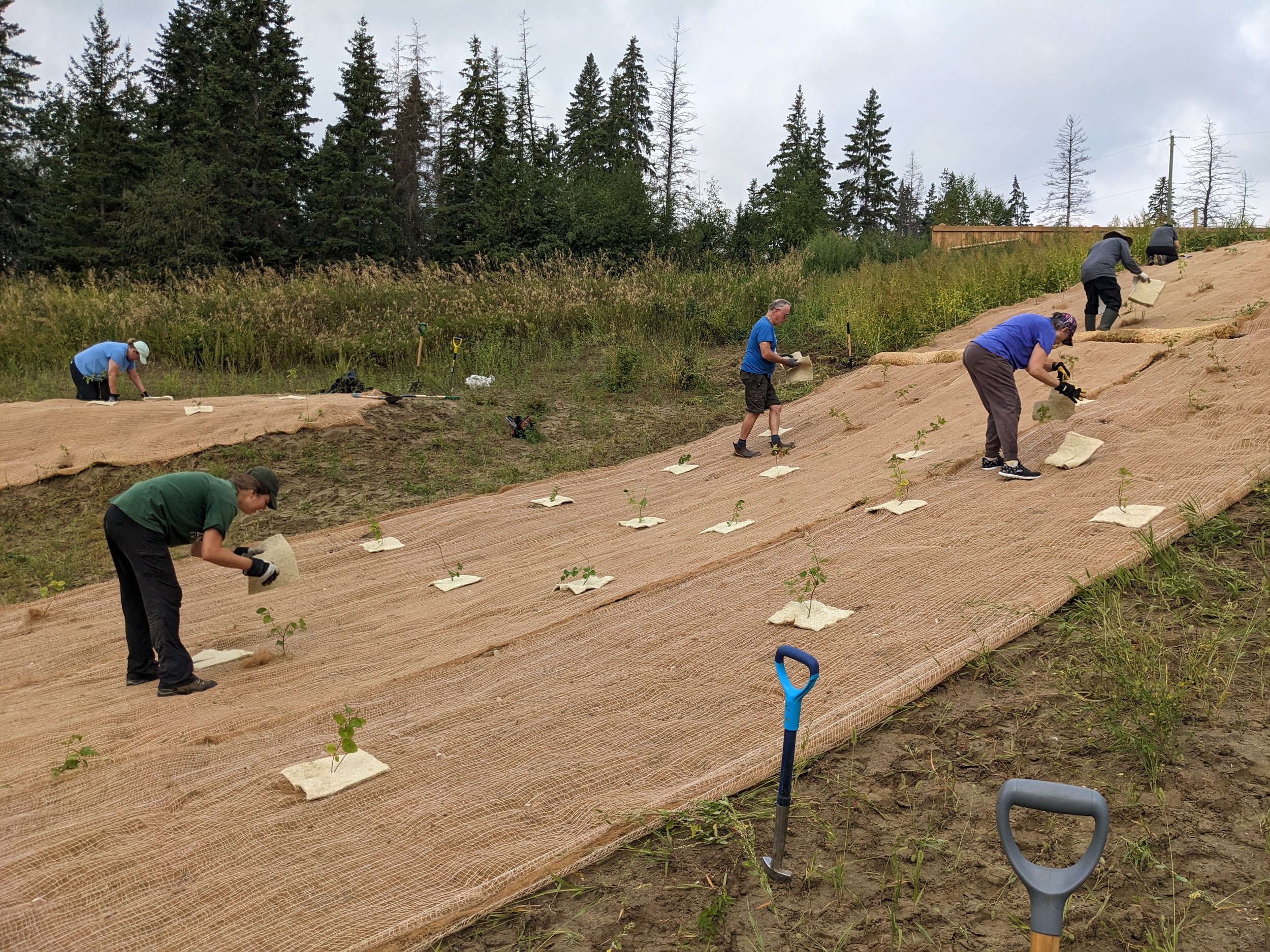

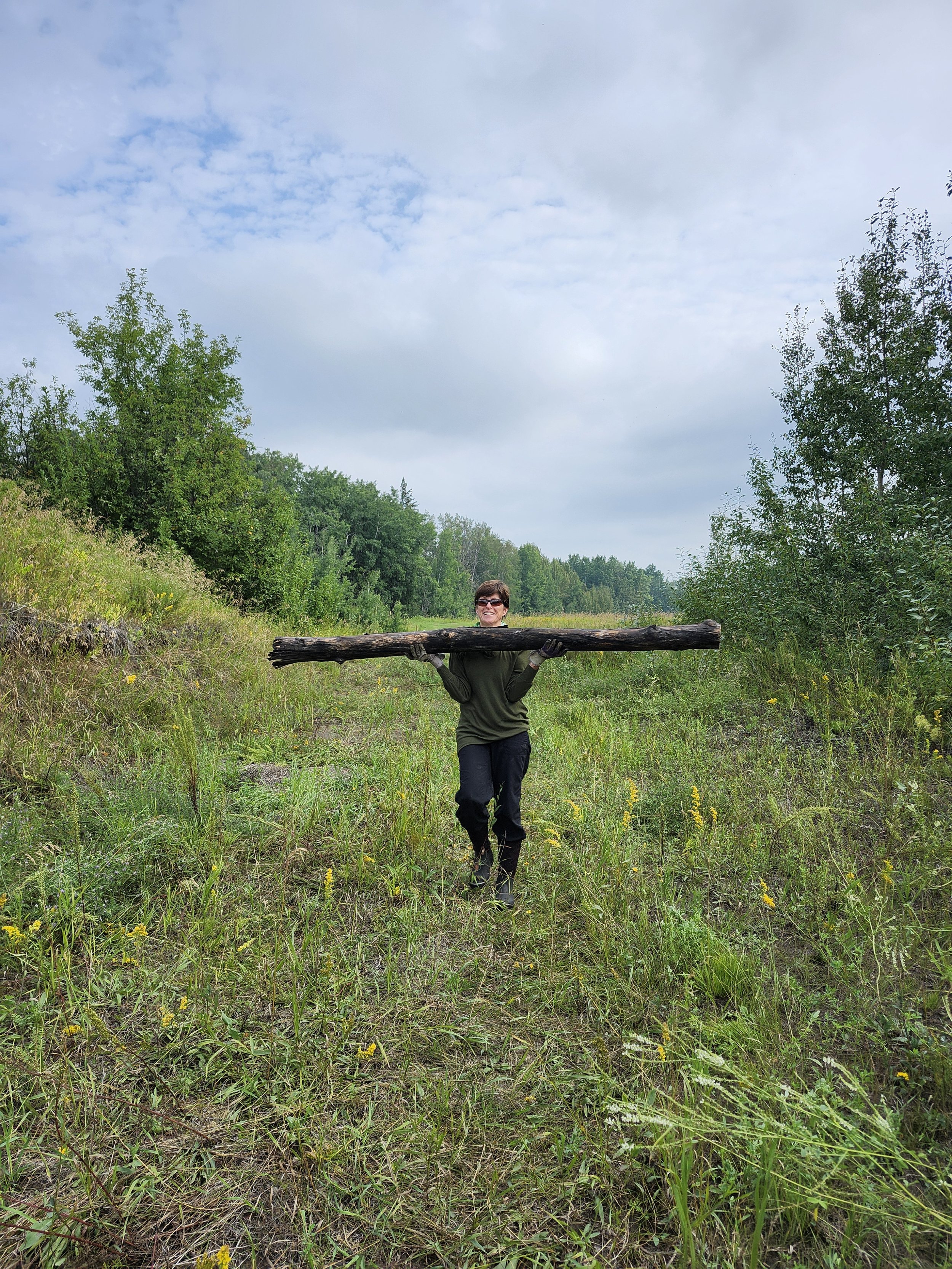
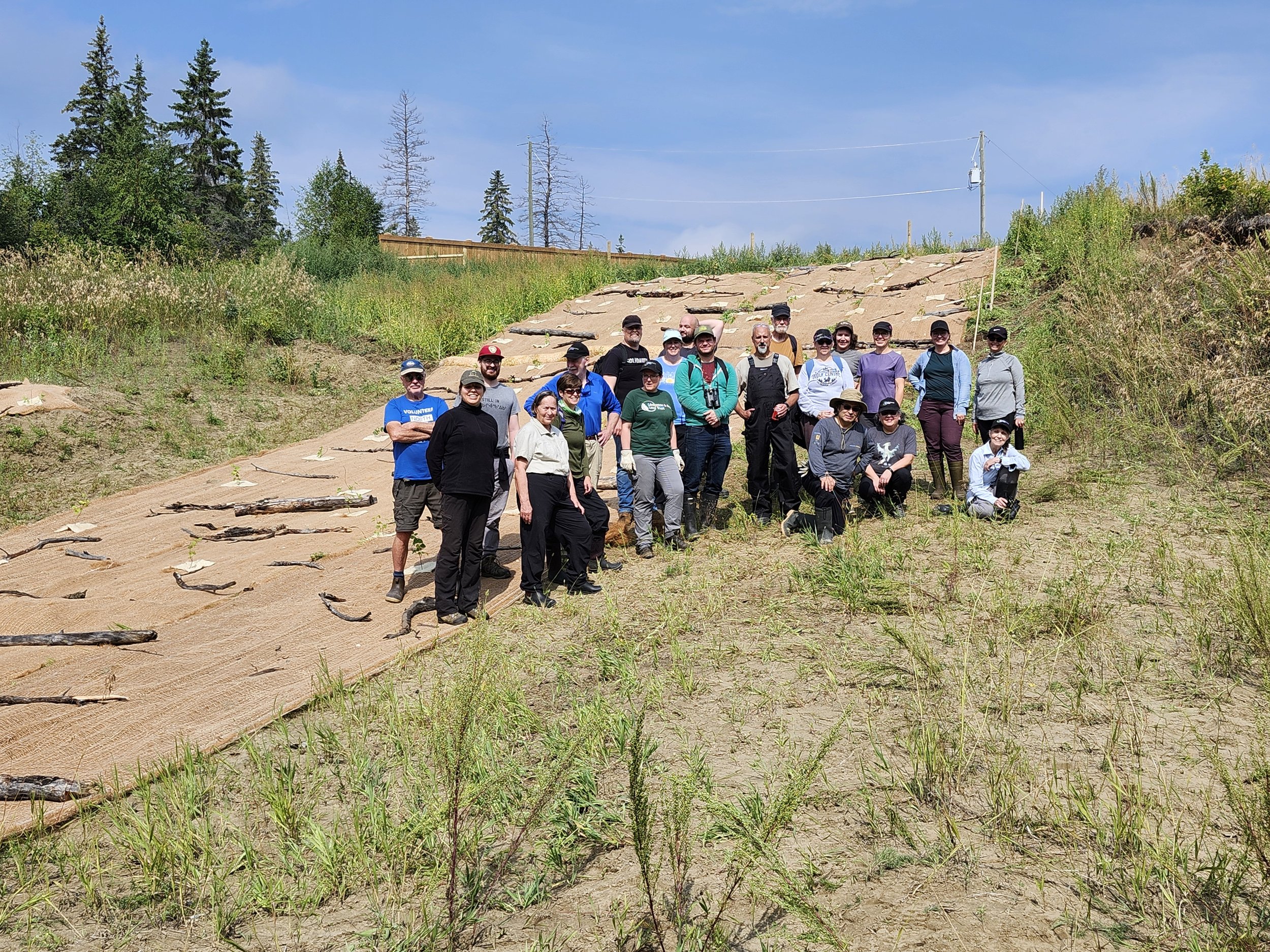
You can support the ongoing stewardship of this new conservation land by donating to our Action Amplified campaign.
Interpretive Sign Repairs
Staff and volunteers headed out to Coates Conservation Land to do some repairs on the land’s interpretive signs. This intense task meant hauling bags of gravel and quick-dry cement down the slope! The weather was thankfully cooperative, and the repairs will ensure that the signs will continue to enhance visitor experience.
Invasive Plant Management
Much of our fieldwork in the summer focuses on removing invasive plants, as this is when it is easiest to find and identify them. According to the International Union for Conservation of Nature (IUCN), invasive species are one of the greatest threats to biodiversity, so managing these plants on our properties is crucial to our stewardship work. Moreover, as the owners of many of our conservation lands, we are legally required to control noxious and prohibited noxious weeds as designated under the Alberta Weed Control Act and Weed Control Regulation. EALT staff and volunteers use a range of weed control methods, including hand-pulling, clipping, weed-whacking, mowing, and biocontrol.
Invasive plant management is an intensive effort. Fortunately, our dedicated volunteers make this work possible. We would like to thank all our Conservation Land Stewards, who play an integral role in stewarding our lands, and the many volunteers who joined our weeding events (including our first Francophone event at Smith-Blackburn Homestead)! You can learn more about our volunteer opportunities here, and keep an eye on our Events page for upcoming opportunities.
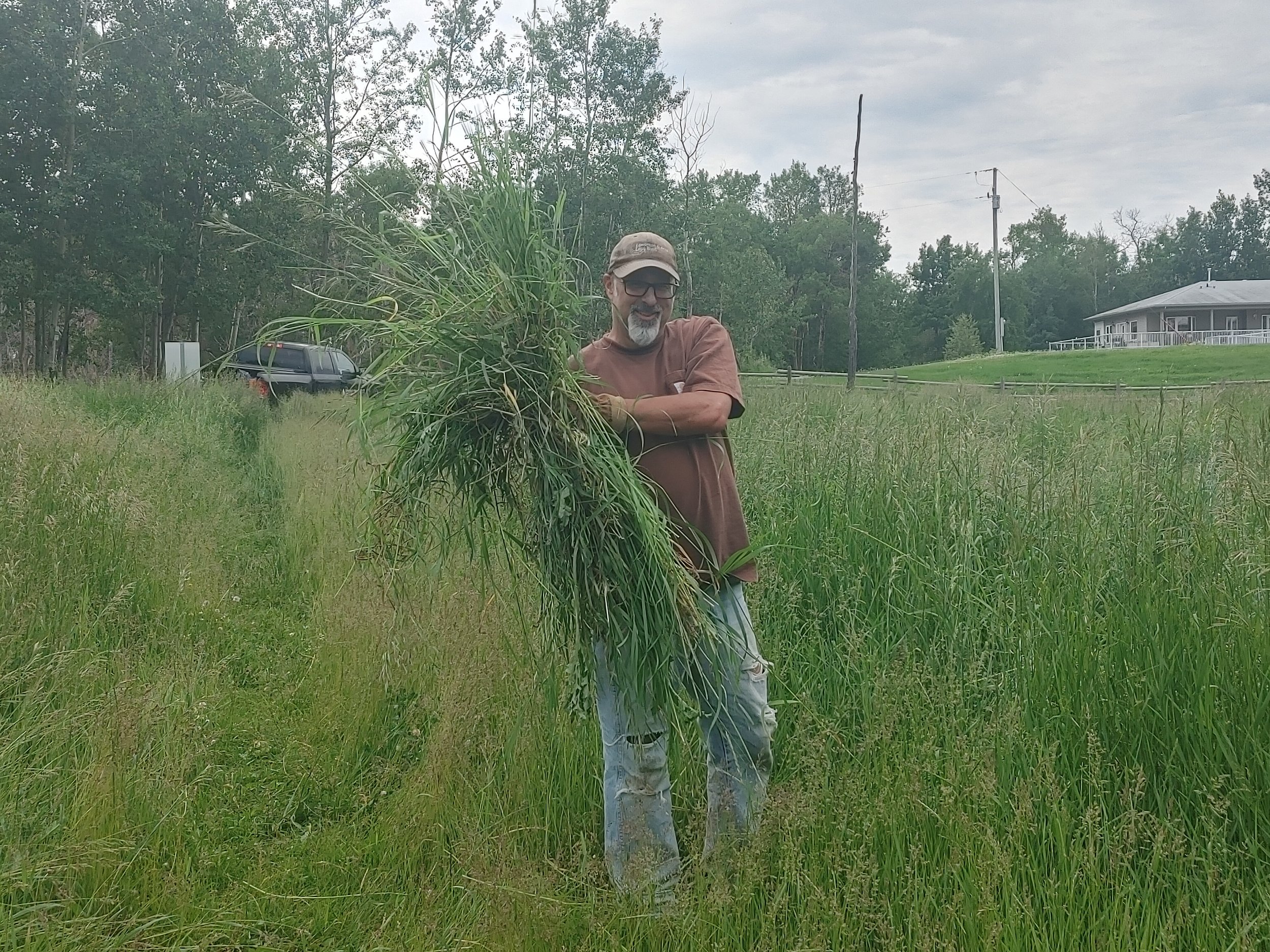

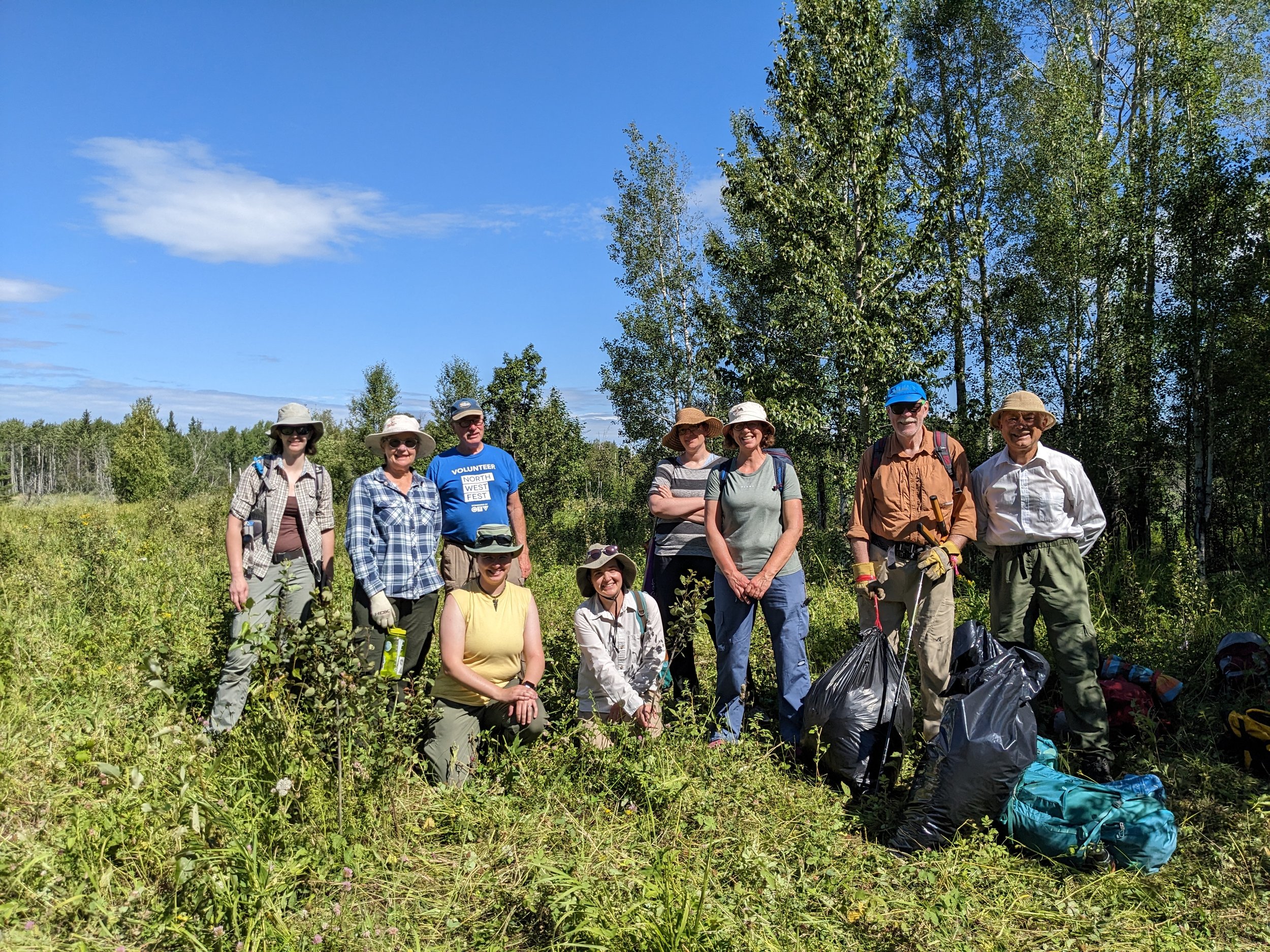
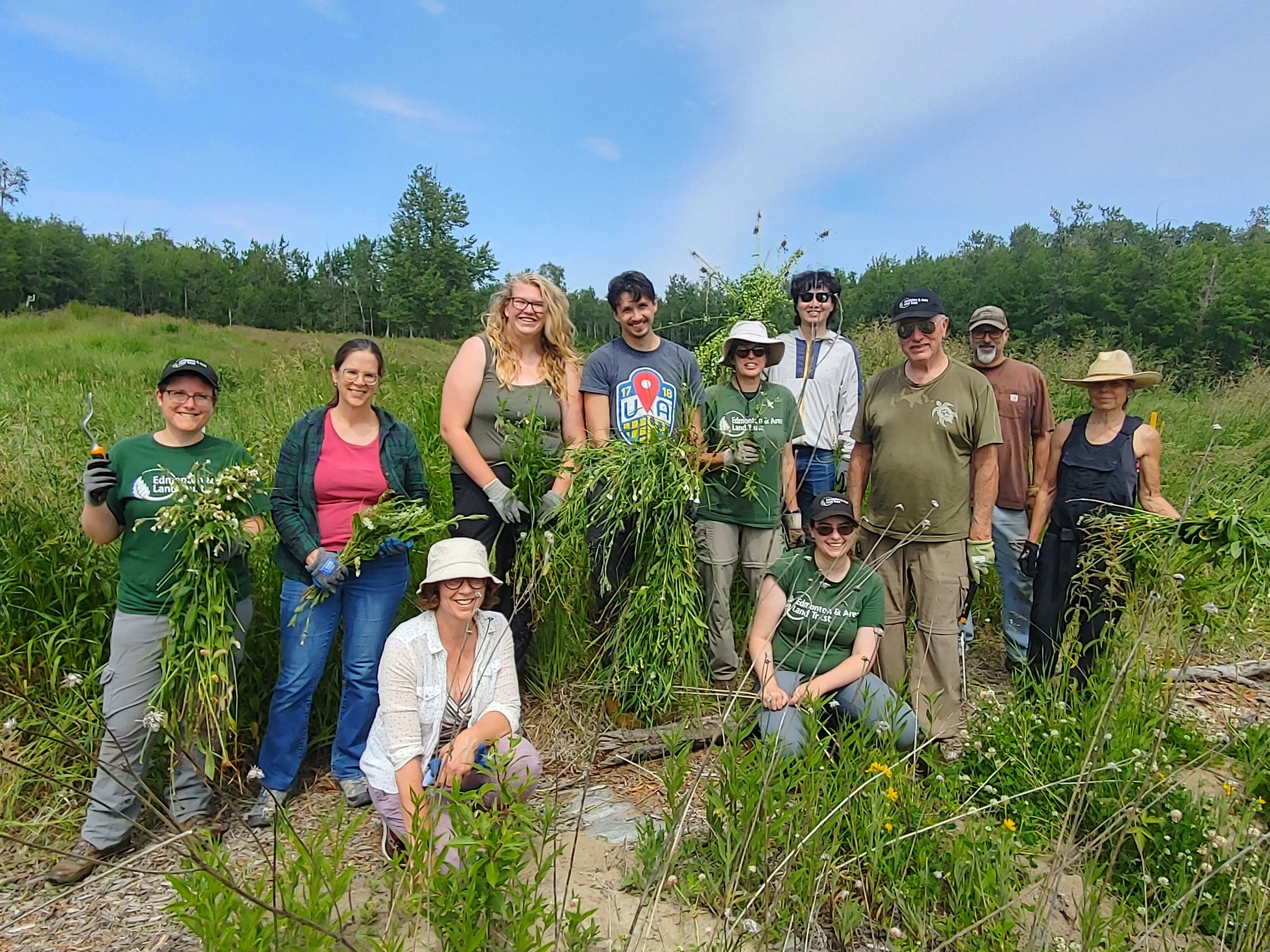
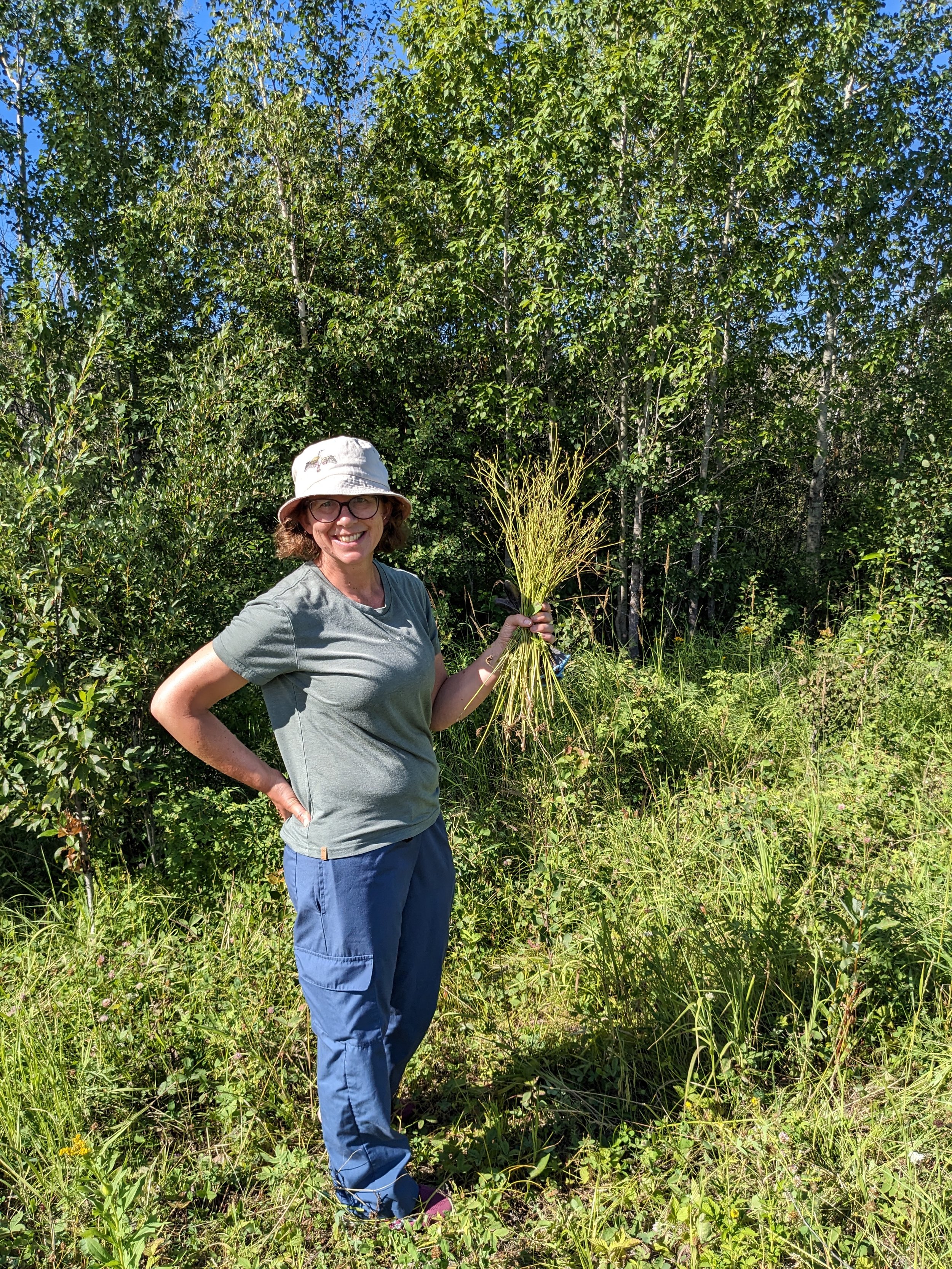
A Wrap On MAPS
We would like to congratulate the Devonian Parkland Banding Station (DPBS) for their completion of another Monitoring Avian Productivity and Survivorship (MAPS) season at Bunchberry Meadows! Volunteers braved early mornings, rain, fog, and the occasional thunderstorm to collect vital data on breeding birds. The data they collected will be submitted to the Institute for Bird Populations and the Canadian Bird Banding Office, where researchers may access it to estimate productivity, survival, and recruitment and inform conservation action for songbirds. Highlights from this MAPS season included a pair of baby Yellow-bellied Sapsuckers, a handsome mature male Tennessee Warbler, and a mostly well-behaved Downy Woodpecker.
Are you interested in becoming a Citizen Scientist with EALT? Visit this page to learn about our activities and to sign up to be notified when 2025 applications open.







